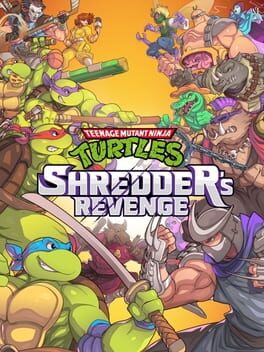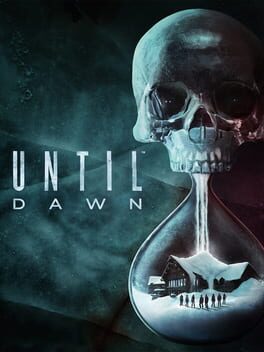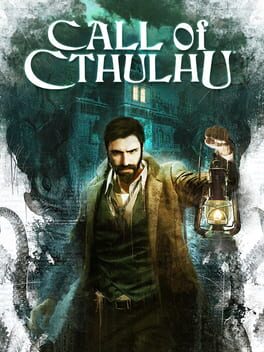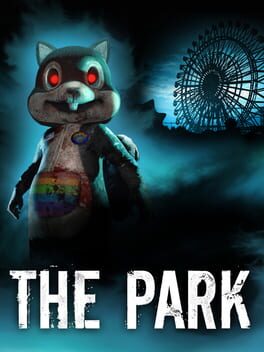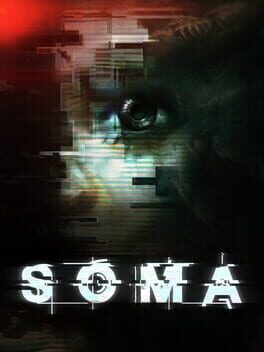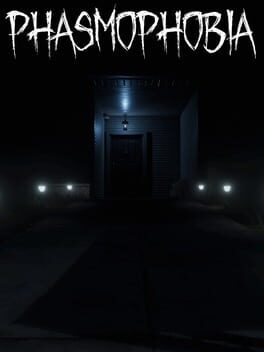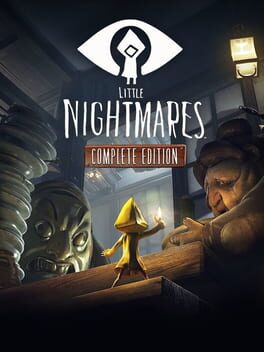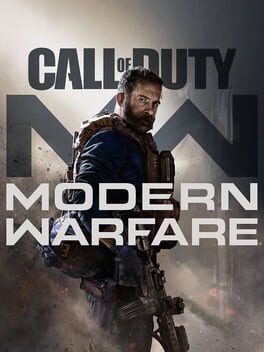Rezlo
BACKER
2018
A colorful platformer from the minds of Spanish company Nomada Studio, Gris tells the haunting story of a young girl coming to terms with losing her mother. To do this, she’s tasked with collecting light across several biomes. Which is where the theme of color comes in. Gris uses bold colors to both represent emotions and make astonishing landscapes to traverse. From blue-accented underwater caves to windy red sand deserts, each section uses striking mono or dual tones that make exploring the game a veritable treat, all underlit by a serene, contemplative soundtrack that I just had to download after finishing the game. As you progress you’ll become increasingly antagonized by black ink creatures, who serve as the sole foes of Gris, requiring puzzle-solving to evade or outright defeat them. I’m personally a fan of them. They provide brief bouts of tension to show the young girl’s inner turmoil in addition to pumping in a dose of urgency to your actions.
Whether I was escorting a newly-acquainted buddy across lush forests or running for my life through Greek architecture from giant crows, my interest never dipped, nor did confusion or frustration rear their heads. It might not be obvious at first the true goal of the game, but as you near the ending and the young girl regains her voice and thus her ability to sing, it becomes abundantly clear what she wishes for and finally gains. Peace with her mother’s passing. It’s a somber feeling to be certain, yet as the credits rolled and she ascended the clouds, it wasn’t despair I was feeling. It was contentment. The obvious contentment from playing an A+ game, but also a closure for the main character that couldn’t help but leave me hopeful. While the story leaves little room for a sequel, you better bet I wouldn’t hesitate to hop on that quicker than a fly on honey.
Whether I was escorting a newly-acquainted buddy across lush forests or running for my life through Greek architecture from giant crows, my interest never dipped, nor did confusion or frustration rear their heads. It might not be obvious at first the true goal of the game, but as you near the ending and the young girl regains her voice and thus her ability to sing, it becomes abundantly clear what she wishes for and finally gains. Peace with her mother’s passing. It’s a somber feeling to be certain, yet as the credits rolled and she ascended the clouds, it wasn’t despair I was feeling. It was contentment. The obvious contentment from playing an A+ game, but also a closure for the main character that couldn’t help but leave me hopeful. While the story leaves little room for a sequel, you better bet I wouldn’t hesitate to hop on that quicker than a fly on honey.
A return to the original arcade titles of yesteryear with all the accouterments you would expect of it, including a gorgeous new coat of paint. The sprite detail is impeccable here, the fighting as simple as you’d hope, and level structure like those of classic beat-em ups. With a large cast of characters that lets you play as all the turtles, Splinter, April O’Neil, and eventually Casey Jones, they do a good job of making each one transparently distinct. At the same time they don’t feel so wildly different as to discourage me from constantly cycling through each character. It helped keep the game fresh by encouraging running through levels over again to get missed items and level up specific characters.
Whether you’re an OG arcade veteran or a newborn gamer, it’s easy to get lost in the breezy combat of Shredder’s Revenge. Each side scrolling level is beautifully crafted and animated, replete with secrets, pizza boxes, and awesome boss fights starring nearly all longtime TMNT villains. Culminating in a cartoon-worthy finale where you have to face Shredder and a robot Statue of Liberty controlled by Krang in the heart of New York City. A fight that I would argue is the only truly difficult level of the game. Now at its core Shredder’s Revenge is a very basic arcade game. Extremely polished no doubt, but as deep as the games it emulates. If its structure doesn’t entice you, if you want a little more out of your time-wasters, then don’t pick it up. I think Shredder’s Revenge makes the right move in keeping it as simple as possible, but I can recognize it’s not for everyone.
Whether you’re an OG arcade veteran or a newborn gamer, it’s easy to get lost in the breezy combat of Shredder’s Revenge. Each side scrolling level is beautifully crafted and animated, replete with secrets, pizza boxes, and awesome boss fights starring nearly all longtime TMNT villains. Culminating in a cartoon-worthy finale where you have to face Shredder and a robot Statue of Liberty controlled by Krang in the heart of New York City. A fight that I would argue is the only truly difficult level of the game. Now at its core Shredder’s Revenge is a very basic arcade game. Extremely polished no doubt, but as deep as the games it emulates. If its structure doesn’t entice you, if you want a little more out of your time-wasters, then don’t pick it up. I think Shredder’s Revenge makes the right move in keeping it as simple as possible, but I can recognize it’s not for everyone.
2006
Going back and visiting old-ish games it’s easy to look back with the benefit of retrospect and judge what aged well and what didn’t. Just Cause (2006) falls firmly into the second category. It begins as every Just Cause does after, with Rico Rodriguez being deployed as a one-man army to an island to sow discord and overthrow the dictator of the week. Sweet. it’s silly, it’s stupid, it’s awesome. It’s an 80s action movie that you can actually play. The problem from there is the amount to do. You can steal vehicles like aircrafts and cars, do repetitive side missions where you walk through a town and shoot enemies, base jump from high points and parachute….. and that’s about it. The main differentiator is the possession of a grappling hook that you can use to hook onto vehicles. I’m not sure if it’s a limitation of the technology or the developer’s imaginations, or maybe I’m spoiled by the sequels but the grappling hook blows. You must manually equip it so no shooting while using it, you have to manually retract and extend the cord, and you have to fight to do anything that’s not paragliding at a breakneck speed of 5 miles an hour. Wherever I could I would ignore this mechanic entirely. A slice more to do would have made this game not feel so empty for being open-world, but as it stands the first Just Cause is nothing more than the first step that had to be taken to craft a remarkable game we wouldn’t see until the sequel.
2022
A high-intensity brawler that’s best played with a controller, Sifu is not to be underestimated by its level count. Its non-regenerative health, tough bosses, and emphasis on learning from past mistakes make for a sizable summit. To boost my point, Sifu uses a respawn mechanic that has you age more each time you fail, lowering your health but upping your damage as you grow older, and providing a firm game over after failing past age 70. Since your health carries over from your best runs between all five missions, your ultimate goal is to complete the game with the lowest possible age. This is the ultimate source of Sifu’s challenge. The fighting itself is sufficiently difficult, and my best advice to give is to practice defense before focusing on offense. Learn the basic mook moves, and then move up to memorizing the boss timings. If you can consistently parry and dodge, and use weapons whenever you find them, you’ll have a huge leg-up in the game.
To be clear, even knowing this you will fail a lot. You will have moments of frustration. You will memorize every room in every mission. Yet it never got old for me. Sifu is the type of game that cultivates determination. I spent hours replaying the same level over and over without getting bored of it. I could feel the progress I was making as I did better each time. Of course, It helps that each mission has a distinct theme that works perfectly to encompass a unique element and vibe. Simply put, Sifu isn’t a game you play. It’s a game that plays you. I don’t even want to know how many gallons of sweat I shed trying to improve my runs. But after over a dozen runs I could finally see the light at the end of the tunnel. I went the spare all enemies route and eventually managed to beat the final boss at only my early 30s. Let me tell you, scarce are the moments above finally hitting those end credits after over 20 hours playing the game. I can comfortably say that Sifu was well worth the 30 bucks.
If you fancy the relatively simple but reactive combat of Sifu and are still itching for content, there’s also modifiers and a recently added Arena mode for more scenarios to pick from. Those are all auxiliary bonuses though. The game more than stands on its own.
To be clear, even knowing this you will fail a lot. You will have moments of frustration. You will memorize every room in every mission. Yet it never got old for me. Sifu is the type of game that cultivates determination. I spent hours replaying the same level over and over without getting bored of it. I could feel the progress I was making as I did better each time. Of course, It helps that each mission has a distinct theme that works perfectly to encompass a unique element and vibe. Simply put, Sifu isn’t a game you play. It’s a game that plays you. I don’t even want to know how many gallons of sweat I shed trying to improve my runs. But after over a dozen runs I could finally see the light at the end of the tunnel. I went the spare all enemies route and eventually managed to beat the final boss at only my early 30s. Let me tell you, scarce are the moments above finally hitting those end credits after over 20 hours playing the game. I can comfortably say that Sifu was well worth the 30 bucks.
If you fancy the relatively simple but reactive combat of Sifu and are still itching for content, there’s also modifiers and a recently added Arena mode for more scenarios to pick from. Those are all auxiliary bonuses though. The game more than stands on its own.
2018
A good game design student’s final project, not so much a full experience that ought to be paid for. I saw Claybook a few years ago on some random youtuber’s indie showcase. It looked cute so I picked it up for cheap. The fundamental concept is rolling around a kid’s clay tabletop as you transmorph into different shapes and rewind time to fulfill mission goals. You might change into a sphere to roll up a ramp, or use a cube and rewind time to create steps to climb. You can also burrow in something to effectively “erase” certain clay structures. Some goals may be to “erase” certain markers on the map, or fill a reservoir with liquid by opening a line up. The problem is the game is finicky, imprecise, and frustrating in its traversal.
Everytime you move you’re degrading the environment by slightly indenting the ground, forcing you to figure things out with little backtracking. The fluid physics are awful and involved in the worst mission objectives in the game. The completion counter is downright inaccurate at times, forcing you to do more than necessary just to get to the next level. And beyond the tutorial, they don’t introduce any cool additions or settings. Any mission or shape they do add is just more and more excruciating to interact with. When I started off I knew how short the game was so I created a goal to 100% it. By mission three I abandoned that mission. Maybe a little more time in the oven and more collaborators would have saved this game from an eternal damnation of collecting dust on the shelf.
Everytime you move you’re degrading the environment by slightly indenting the ground, forcing you to figure things out with little backtracking. The fluid physics are awful and involved in the worst mission objectives in the game. The completion counter is downright inaccurate at times, forcing you to do more than necessary just to get to the next level. And beyond the tutorial, they don’t introduce any cool additions or settings. Any mission or shape they do add is just more and more excruciating to interact with. When I started off I knew how short the game was so I created a goal to 100% it. By mission three I abandoned that mission. Maybe a little more time in the oven and more collaborators would have saved this game from an eternal damnation of collecting dust on the shelf.
2007
Surprise, surprise, old Valve knocks it out of the park again with 2007’s Portal. Housing only two characters in the whole game, Portal is as minimal as the clinically sterile chambers you traverse. Which is used spectacularly, as both story and puzzles are dispensed in the perfect amount from room to room. Using little else besides a lovable cube and your trusty Portal gun, you’re asked to solve a series of physics puzzles to progress beyond each door in the facility you find yourself in. Each puzzle is relatively short, but gets slightly harder each time as new mechanics are introduced. And for as common as it is for puzzle games to have at least one frustrating section, Portal never approached boring, aggravating or overly complicated once in my entire playthrough. It’s like Valve genetically engineered the ideal 5-10 minute gameplay loop that asks the user to use just enough of their brain to be engaging. It’s never immediately clear what to do, but it feels like a breeze with how fun it is to tinker around for the solution.
I don’t normally go for the whole quirky, sarcastic killer humor. It often feels different or edgy for the sake of being different or edgy. Here, it’s equal parts funny and satisfying to overcome GLaDOS’ murder attempts as she promises us infantile gifts for our cooperation. Her increasingly mask-off murderous intent and infrequent monologuing is a hearty scoop of levity that gives us a clear reason for doing what we’re doing. The facility losing its cleaner facade as she gets angrier with your attempts to escape is both a perfect mirror of her mental state as well as a fun peeling back of this micro-world in an impressively eerie way. I implore anyone to give Portal a play. It’s short, easy to follow, and never has a dull moment.
I don’t normally go for the whole quirky, sarcastic killer humor. It often feels different or edgy for the sake of being different or edgy. Here, it’s equal parts funny and satisfying to overcome GLaDOS’ murder attempts as she promises us infantile gifts for our cooperation. Her increasingly mask-off murderous intent and infrequent monologuing is a hearty scoop of levity that gives us a clear reason for doing what we’re doing. The facility losing its cleaner facade as she gets angrier with your attempts to escape is both a perfect mirror of her mental state as well as a fun peeling back of this micro-world in an impressively eerie way. I implore anyone to give Portal a play. It’s short, easy to follow, and never has a dull moment.
2015
A lot of games try to be like movies by emulating elements directly. Maybe they add a film grain, or movie-like opening credits. For Until Dawn, their emulation of the classic slashers can be seen in the characterizations, setup and flow of the game itself. A group of teens spending the night alone at a remote mountain lodge in Washington with nothing but booze and hormones is so cliche I can practically feel the acne. That’s not a complaint, just an observation. If you fancy teen slashers, you’ll enjoy Until Dawn. With these tropes comes some good and some bad. The mean-girl will be just as unlikable as she is in that 80s slasher you’d pick up from Blockbuster, the tone as indecisive as me in the candy aisle, and the dialogue just as at home on a teen’s Tumblr page. Truthfully, it makes half the cast instantly dislikable, but since they’re gonna be dying you won’t feel so bad about it at least. Until Dawn is no oscar bait, it’s best to just take it as it is and enjoy the ride.
The game uses a Butterfly Effect system to determine certain outcomes of your run, an under-the-hood system which considers every decision you make to determine who lives and who dies, as well as more innocuous things like who’s still cool with who. Certain magic totems you can find can give you an insight into possible futures, but they give little hint for how to avoid or achieve them. Both small and large decisions can be the deciding factor in someone’s survival, making it pretty much impossible to not lose a few people unless you’re using a guide. Just prepare for last-minute upsets and photo finish survivals. The game’s use of QTEs and Don’t Move Prompts that have you keep your controller still are surprisingly used to great effect here. Unless you're missing every QTE it’s rarely life or death and it’s quite exceptional at keeping you on your toes at all times. If you just so happen to have a PS4, the only console this was released on, I’d say give it a go whenever you have a free night and a hankering for horror.
The game uses a Butterfly Effect system to determine certain outcomes of your run, an under-the-hood system which considers every decision you make to determine who lives and who dies, as well as more innocuous things like who’s still cool with who. Certain magic totems you can find can give you an insight into possible futures, but they give little hint for how to avoid or achieve them. Both small and large decisions can be the deciding factor in someone’s survival, making it pretty much impossible to not lose a few people unless you’re using a guide. Just prepare for last-minute upsets and photo finish survivals. The game’s use of QTEs and Don’t Move Prompts that have you keep your controller still are surprisingly used to great effect here. Unless you're missing every QTE it’s rarely life or death and it’s quite exceptional at keeping you on your toes at all times. If you just so happen to have a PS4, the only console this was released on, I’d say give it a go whenever you have a free night and a hankering for horror.
2018
The so-far best Lovecraft game I’ve played, this time a RPG venture. That being understood, it’s not without its share of jank. Occasional clipping, cheesy dialogue, and choppy movement are no strangers here on the island of Darkwater. Yet instead of annoyance I found it made the game more charming. A common theme of the game for me. Besides that if there’s one I can commend the game on it's making the game feel a lot bigger than it really is. For how restrictive the locations and interactions are, the settings and puzzles work quite nice. Granted The Call of Cthulhu is a far cry from the arena of larger epics, but rarely does it blatantly feel like it. On the flipside it made it all the more disappointing when I wanted to get more in depth than the game would let me. Most areas are only open a single time and you can’t go back and converse with other characters again.
As for the RPG elements, they were…. there. You’ve got your strength, investigation, eloquence, psychology, and so on. Your standard fare. The problem is, they’re never really explained beyond basic blurbs and you never feel their importance. They unfortunately come across as more cosmetic changes than anything. For it being an indie game I almost reckon they should have just forgone those RPG elements entirely. Again, the game is quite restrictive. Cozy, but restrictive. Having a fully-realized upgrade system is hard to make rewarding in any game, let alone a moderately long indie one with a linear story. They definitely should have waited for when they could make a larger story, where they could have given these mechanics the attention they deserve.
The absolute apex of the game has got to be near the ending, which gives us the best visual of the game. When Cthulhu’s silhouette can be seen across a tempestuous expanse of overcast clouds, heavy fog, and rocky waves. It’s absolutely stunning, and also leads up to one of the four different endings, all of which are tragic to some extent. Though it’s an impressive amount of endings I find it hard to believe you’ll get a specific one without random chance or purposefully trying to get an ending by looking up the requirements. Thankfully the standard ending is the best so I wouldn’t put too much thought into it.
At the end of the day Call of Cthulhu is a good Lovecraft game, but I’m still waiting for a fantastic Lovecraft game. In the meantime, I’ll commend what team Cyanide was able to accomplish in a woefully underutilized subgenre, even if they bit off more than they could chew.
As for the RPG elements, they were…. there. You’ve got your strength, investigation, eloquence, psychology, and so on. Your standard fare. The problem is, they’re never really explained beyond basic blurbs and you never feel their importance. They unfortunately come across as more cosmetic changes than anything. For it being an indie game I almost reckon they should have just forgone those RPG elements entirely. Again, the game is quite restrictive. Cozy, but restrictive. Having a fully-realized upgrade system is hard to make rewarding in any game, let alone a moderately long indie one with a linear story. They definitely should have waited for when they could make a larger story, where they could have given these mechanics the attention they deserve.
The absolute apex of the game has got to be near the ending, which gives us the best visual of the game. When Cthulhu’s silhouette can be seen across a tempestuous expanse of overcast clouds, heavy fog, and rocky waves. It’s absolutely stunning, and also leads up to one of the four different endings, all of which are tragic to some extent. Though it’s an impressive amount of endings I find it hard to believe you’ll get a specific one without random chance or purposefully trying to get an ending by looking up the requirements. Thankfully the standard ending is the best so I wouldn’t put too much thought into it.
At the end of the day Call of Cthulhu is a good Lovecraft game, but I’m still waiting for a fantastic Lovecraft game. In the meantime, I’ll commend what team Cyanide was able to accomplish in a woefully underutilized subgenre, even if they bit off more than they could chew.
2015
Clocking it at only 2 hours at the max and requiring little player input, The Park is really more of a personal vignette than a full fledged game. Playing it a second time tempered my frustration with it, though not enough to make it worth a play still. It has an awesome setting and a juicy if perhaps overplayed mental health theme. But The Park is like an unfinished cake you took out of the oven too early. You can smell the potential, it just doesn’t have enough to really hook the player before the credits are rolling, P.T. sequence included. And speaking of cake, the game also feels like it wants to have its cake and eat it too with how it wants to be an allegory AND a supernatural story. For such a simple story they really should have tempered their ambitions to make it at all satisfying. Everyone’s too afraid to give a conclusive ending these days even when no further plans exist. Anyway, after all this talk about cake I’m fiending for it like a man lost in the desert, so I’m gonna go find a helpless confection to ravage.
2014
A clear love letter to Resident Evil, it should be no surprise that Evil Within comes from the mind of Shinji Mikami, who directed multiple RE entries such as RE1 and RE4. Being the first entry in the series, Evil Within is best described as a relatively difficult, surreal action-horror with an underlying theme of eldritch torment, sorta like Inception on Adderall if it were directed by David Cronenberg. Like many RE games, ammo-hoarding is encouraged, boss fights are intense and regular, and things are not as they seem.
Unlike Resident Evil, The Evil Within implements a unique “cinematic” mode by default which adds black bars and a film grain to the screen, likely to invoke the nostalgic feeling of watching an old-horror flick on Pa’s CRT TV where the formatting doesn’t always match the screen. Luckily they eventually made the mode toggleable for people who preferred a more traditional presentation. I didn’t really mind it and kept it on throughout the whole game for the sake of experiencing it as it’s meant to be played, but I can understand why others would turn it off. I enjoyed it enough for the novelty of it, plus it added to the suffocating theme of darkness in the game.
The story is mostly straightforward after the initial cacophony of confusion, with narrative elements drip-fed between bookended action and travel sequences. My favorite of which being the mansion flashback mission, which felt the most reminiscent of old-school exploration games while also providing some of the most important information of the story. The story’s a bit disjointed at times, yet even that kinda plays into the narrative framing so I won’t harp on it too much. When all is said and done by the end you get the gist of the overall conflict and timeline, but I feel like there’s a lot more tertiary questions raised than answered by the end of it, even after the Kidman DLC. Hopefully not too many of them go unaddressed in the sequel.
Not to be overlooked, the gameplay submits its own share of challenges to make it noteworthy too. After playing the game in full it becomes clear that Mikami employed a more unorthodox approach to preparing the player. A slight swivel when aiming, high enemy health pools, confined spaces, limited ammo, and a trial-and-error approach needed to defeat certain enemy encounters offers a higher level of challenge yet a more rewarding triumph. The player is far from powerless, but you’re no Rambo in this world. Though not without frustration (there’s so many traps and one hit-kills), I ultimately appreciate the balance the game struck between intuitive progression and taxing gauntlets.
Evil Within isn’t necessarily scary in the normal sense, however its enemy designs perfectly encapsulate the aesthetic of nightmarish horror. The barbed-wire wrapped and glass shard embedded mountains of fleshy monsters are some of the best designs I’ve seen to date. Altogether Evil Within is certainly worth its admission, but don’t expect an easy ride through its tunnel of terrors.
Unlike Resident Evil, The Evil Within implements a unique “cinematic” mode by default which adds black bars and a film grain to the screen, likely to invoke the nostalgic feeling of watching an old-horror flick on Pa’s CRT TV where the formatting doesn’t always match the screen. Luckily they eventually made the mode toggleable for people who preferred a more traditional presentation. I didn’t really mind it and kept it on throughout the whole game for the sake of experiencing it as it’s meant to be played, but I can understand why others would turn it off. I enjoyed it enough for the novelty of it, plus it added to the suffocating theme of darkness in the game.
The story is mostly straightforward after the initial cacophony of confusion, with narrative elements drip-fed between bookended action and travel sequences. My favorite of which being the mansion flashback mission, which felt the most reminiscent of old-school exploration games while also providing some of the most important information of the story. The story’s a bit disjointed at times, yet even that kinda plays into the narrative framing so I won’t harp on it too much. When all is said and done by the end you get the gist of the overall conflict and timeline, but I feel like there’s a lot more tertiary questions raised than answered by the end of it, even after the Kidman DLC. Hopefully not too many of them go unaddressed in the sequel.
Not to be overlooked, the gameplay submits its own share of challenges to make it noteworthy too. After playing the game in full it becomes clear that Mikami employed a more unorthodox approach to preparing the player. A slight swivel when aiming, high enemy health pools, confined spaces, limited ammo, and a trial-and-error approach needed to defeat certain enemy encounters offers a higher level of challenge yet a more rewarding triumph. The player is far from powerless, but you’re no Rambo in this world. Though not without frustration (there’s so many traps and one hit-kills), I ultimately appreciate the balance the game struck between intuitive progression and taxing gauntlets.
Evil Within isn’t necessarily scary in the normal sense, however its enemy designs perfectly encapsulate the aesthetic of nightmarish horror. The barbed-wire wrapped and glass shard embedded mountains of fleshy monsters are some of the best designs I’ve seen to date. Altogether Evil Within is certainly worth its admission, but don’t expect an easy ride through its tunnel of terrors.
2010
This review contains spoilers
Perhaps the single biggest gaming letdown I've experienced so far. With how much Alan Wake is hyped up by nearly everyone who plays it, it comes as a disappointment that actually playing the game is a mostly boring, positively confounding slog.
First, let me start with a few things I liked. The episodic tv-show format that it uses is a nice homage to the classic media like Twin Peaks that inspired the game. It doesn’t have a huge effect on anything, but it’s probably the most faithful execution I’ve seen yet, even if the “previously on Alan Wake” recaps are entirely redundant. I also adore Bright Falls, the sleepy Pacific Northwest town that’s as cozy as it is ripe for mystery. I just wish we spent more time in the town than the dull forest you spend 90% of the game in.
Now let’s get into how Alan Wake squanders its decent potential. Let’s start with the combat. At first the idea of using light to weaken enemies before putting them down seems like a unique spin on fighting foes. It’s a great setup for improvisation by not allowing you to brute force every encounter. Unfortunately not much thought was put into it besides that. The game just gives you a magically limitless flashlight that trivializes the concept itself. It’s painfully tedious to have to stare at every enemy for an extra five seconds before even beginning to shoot at them. It is comical how quickly the game becomes a chore to play when every encounter is artificially lengthened by the unengaging and shallow light mechanic, only made slightly less annoying by the occasional flashbang you can find.
Add to the list an inconsistent dodge mechanic that works whenever it feels like it and the gameplay can basically be boiled down to running from Point A to Point B while you’re made a pincushion by hordes of world-class axe throwers constantly surrounding you every 10 seconds. There’s no interesting puzzles, fun segments, or challenges of quick-wit. Just tests of attrition mislabeled as chapters. It says a lot that my personal favorite part of the game is whenever it lets you drive, because of how cathartic it was to feel like I was saving time by skipping possible enemy encounters.
Now onto the story. Alan Wake does one of those things that I absolutely despise. It presents a plausible explanation for the events of the story (he’s just imagining things), makes you think that’s where it’s going, and then does the fakeout. The problem is that not only does it all being fake or exaggerated make more sense, but it also offers the only out for a half-baked story with characters who act like the Dunkin Donuts got their order wrong instead of there being shadow monsters invading their town. I was praying it was all in his head the whole time because of how utterly devoid of logic it would otherwise be.
The whole story was told in such an over-serious way with such a silly premise that never really gets explored or explained that in my mind it couldn’t possibly be all that it seems. There simply HAD to be more to it. But nope, everything Alan witnessed and heard is actually exactly as it’s told. It turns out everyone else is crazy for thinking that an eldritch monster demon-woman is unlikely to latch on to and weaponize the writings of a second class writer with too much melodrama for his own good.
With a clearer focus on making a compelling narrative, I would have been much more likely to overlook the lackluster gameplay. I have nothing against cheesy or hokey stories, but Alan Wake feels like it’s trying to use its inspirations to excuse the lack of a tonally consistent story. I don’t hate Alan Wake, but I hate that I don’t like it.
First, let me start with a few things I liked. The episodic tv-show format that it uses is a nice homage to the classic media like Twin Peaks that inspired the game. It doesn’t have a huge effect on anything, but it’s probably the most faithful execution I’ve seen yet, even if the “previously on Alan Wake” recaps are entirely redundant. I also adore Bright Falls, the sleepy Pacific Northwest town that’s as cozy as it is ripe for mystery. I just wish we spent more time in the town than the dull forest you spend 90% of the game in.
Now let’s get into how Alan Wake squanders its decent potential. Let’s start with the combat. At first the idea of using light to weaken enemies before putting them down seems like a unique spin on fighting foes. It’s a great setup for improvisation by not allowing you to brute force every encounter. Unfortunately not much thought was put into it besides that. The game just gives you a magically limitless flashlight that trivializes the concept itself. It’s painfully tedious to have to stare at every enemy for an extra five seconds before even beginning to shoot at them. It is comical how quickly the game becomes a chore to play when every encounter is artificially lengthened by the unengaging and shallow light mechanic, only made slightly less annoying by the occasional flashbang you can find.
Add to the list an inconsistent dodge mechanic that works whenever it feels like it and the gameplay can basically be boiled down to running from Point A to Point B while you’re made a pincushion by hordes of world-class axe throwers constantly surrounding you every 10 seconds. There’s no interesting puzzles, fun segments, or challenges of quick-wit. Just tests of attrition mislabeled as chapters. It says a lot that my personal favorite part of the game is whenever it lets you drive, because of how cathartic it was to feel like I was saving time by skipping possible enemy encounters.
Now onto the story. Alan Wake does one of those things that I absolutely despise. It presents a plausible explanation for the events of the story (he’s just imagining things), makes you think that’s where it’s going, and then does the fakeout. The problem is that not only does it all being fake or exaggerated make more sense, but it also offers the only out for a half-baked story with characters who act like the Dunkin Donuts got their order wrong instead of there being shadow monsters invading their town. I was praying it was all in his head the whole time because of how utterly devoid of logic it would otherwise be.
The whole story was told in such an over-serious way with such a silly premise that never really gets explored or explained that in my mind it couldn’t possibly be all that it seems. There simply HAD to be more to it. But nope, everything Alan witnessed and heard is actually exactly as it’s told. It turns out everyone else is crazy for thinking that an eldritch monster demon-woman is unlikely to latch on to and weaponize the writings of a second class writer with too much melodrama for his own good.
With a clearer focus on making a compelling narrative, I would have been much more likely to overlook the lackluster gameplay. I have nothing against cheesy or hokey stories, but Alan Wake feels like it’s trying to use its inspirations to excuse the lack of a tonally consistent story. I don’t hate Alan Wake, but I hate that I don’t like it.
2015
When you’re first thrust into the world of Soma, alone and in an unfamiliar research facility many hundreds of feet below the surface, you’re just as confused as the titular protagonist Simon is. With the help of a quickly acquired companion by the name of Catherine, who guides you through your journey by voice alone, you begin to discover the nature of the world around you and learn of a potential last hope for humanity after a catastrophic event.
During this voyage you traverse numerous research stations and underwater locations, all eerily empty except for the few machines that remain. It’s this somber setting that serves as the backdrop to the real bread and butter of the game, Simon’s conversations with Catherine, both about what the world’s become and more philosophical topics like, “what is consciousness?”, “what does it mean to be you?”, and “when do we cease to exist, really?”. All seamlessly strung together in a way that feels inexplicably natural despite the circumstances in which you’re asking them.
In this interweaving of setting and narrative, Soma does something really special. While both can be admired independently for their contemplative qualities and visuals, there is more to it than just that. The various desolate and rundown locations serve as a perfect fuel for the narrative, adding a complementary dash of loneliness, sorrow, and awe. Of course it helps that the game is legitimately beautiful too, and even allows you to toggle a safe mode option, letting you play the game without fear of dying to potential threats. It’s a nice setting for when you want a cerebral experience as opposed to a more visceral one.
My only lament is that it ended at all, but I am satisfied with its length and message. The longer I played the more enthralled I became in the overarching story of failure, redemption, and hope. All that said, don’t think Soma is a non-stop montage of conversation. The game knows when to cease the chatter and let you take in the world, but you know they've succeeded in hooking your interest when you’re excited for the next time Simon or Catherine open their mouths.
During this voyage you traverse numerous research stations and underwater locations, all eerily empty except for the few machines that remain. It’s this somber setting that serves as the backdrop to the real bread and butter of the game, Simon’s conversations with Catherine, both about what the world’s become and more philosophical topics like, “what is consciousness?”, “what does it mean to be you?”, and “when do we cease to exist, really?”. All seamlessly strung together in a way that feels inexplicably natural despite the circumstances in which you’re asking them.
In this interweaving of setting and narrative, Soma does something really special. While both can be admired independently for their contemplative qualities and visuals, there is more to it than just that. The various desolate and rundown locations serve as a perfect fuel for the narrative, adding a complementary dash of loneliness, sorrow, and awe. Of course it helps that the game is legitimately beautiful too, and even allows you to toggle a safe mode option, letting you play the game without fear of dying to potential threats. It’s a nice setting for when you want a cerebral experience as opposed to a more visceral one.
My only lament is that it ended at all, but I am satisfied with its length and message. The longer I played the more enthralled I became in the overarching story of failure, redemption, and hope. All that said, don’t think Soma is a non-stop montage of conversation. The game knows when to cease the chatter and let you take in the world, but you know they've succeeded in hooking your interest when you’re excited for the next time Simon or Catherine open their mouths.
2020
Phasmophobia is a game that lives and dies by the ability of players to wrangle up some friends to go ghost-hunting with. While technically playable solo you’re missing out on the real draw of the game by doing so, limiting shenanigan potential greatly as well as making harder difficulties nearly impossible. While there is enjoyment in strictly trying to figure out the ghost through investigations, the spook factor mostly wears off with time and repetition, and the inclusion of others becomes a near necessity. That isn’t even really a big deal when it comes down to it though, because if you’re playing this game it’s likely you intend to play with friends anyway.
Even with friends the game would still get old before too long, but with the dev(s?) constantly updating with new items, maps, and fixes the game can be a nice riff session for a couple hours every few weekends. Whether it be the silly, borderline-eldritch degree to which the player can stretch their body or the impromptu games of player imposed hide-and-seek, the game is as much a comedy as it is a horror game. An aspect that you come to appreciate when the aforementioned spook factor is diminished over time. At its core Phasmophobia is a decently-janky game that’s limited shelf-life is compensated with hilarious moments of tense ghost chases and player-on-player hijinks. It has no real depth to it, but it’s a fun throwaway title nevertheless.
Even with friends the game would still get old before too long, but with the dev(s?) constantly updating with new items, maps, and fixes the game can be a nice riff session for a couple hours every few weekends. Whether it be the silly, borderline-eldritch degree to which the player can stretch their body or the impromptu games of player imposed hide-and-seek, the game is as much a comedy as it is a horror game. An aspect that you come to appreciate when the aforementioned spook factor is diminished over time. At its core Phasmophobia is a decently-janky game that’s limited shelf-life is compensated with hilarious moments of tense ghost chases and player-on-player hijinks. It has no real depth to it, but it’s a fun throwaway title nevertheless.
A charming puzzle-based horror whose atmosphere and soundtrack are its strongest points. The dark fantasy art direction reminds me most of Henry Selic’s works, particularly Coraline, perfectly distilling that uncanny valley of creepy-cute mixed with gothic. Coupled with the dark lullabies and booming orchestral themes it’s easy to become engrossed in the experience. It’s a bit shorter than I’d like it to be, but it mostly serves the game to keep the sections brief and succinct, plus the Secrets of the Maw DLC adds a slight increase of challenge and length that I was itching for at the end of the base game. As with most games the bosses are the best part, each providing a short but tense encounter with some of the monstrous creatures that inhabit the ship you’re on. Besides the way-points being a little too punishing in their spread sometimes, the game was a pleasant experience through and through that serves as a great killer of a free evening.
Modern Warfare 2019 was a bit of a reentry into the COD-osphere for me. After many formative years spent with the franchise I got a bit fatigued with the lack of innovation and general oversaturation of the shooter market. The only reason I even gave this 2019 reboot a try was because for the first time in a long time, the clips I saw of the game actually made me want to play it. And after playing the game enough to unlock the mastery camo for ALL weapons, I can confidently say I do not regret that decision. If nothing else can be said, Modern Warfare is one of the nicest feeling shooters I’ve ever played. The buttery smooth movement, new features (finishers, NVGs, gunfight mode, doors), and revamped animations really breathed life into a long-retired franchise for me.
Modern Warfare’s larger emphasis on attention to detail and its semi-serious tone is a nice change of pace from the nearly endless Michael Bay-like pile of mindless action that COD has leaned into a little too hard the last few years. It’s still unmistakably Call of Duty, but almost everything it adds to the recipe builds on the franchise’s formula in new and fun ways.
The story is a decent romp, with its shining moments being the ones that are the most serious, historically reminiscence, or tactically immersive. Hopefully they can build on more moments like these in future installments. The maps are gorgeous and I can respect the desire to try something other than endless three lanes, but some maps, and especially the ground war maps, suffer from being a bit too linear and open. Not just a sincere revival of the franchise, Modern Warfare is a fantastic casual shooter that reinforces why Call of Duty is the king of dumb fun.
Modern Warfare’s larger emphasis on attention to detail and its semi-serious tone is a nice change of pace from the nearly endless Michael Bay-like pile of mindless action that COD has leaned into a little too hard the last few years. It’s still unmistakably Call of Duty, but almost everything it adds to the recipe builds on the franchise’s formula in new and fun ways.
The story is a decent romp, with its shining moments being the ones that are the most serious, historically reminiscence, or tactically immersive. Hopefully they can build on more moments like these in future installments. The maps are gorgeous and I can respect the desire to try something other than endless three lanes, but some maps, and especially the ground war maps, suffer from being a bit too linear and open. Not just a sincere revival of the franchise, Modern Warfare is a fantastic casual shooter that reinforces why Call of Duty is the king of dumb fun.

